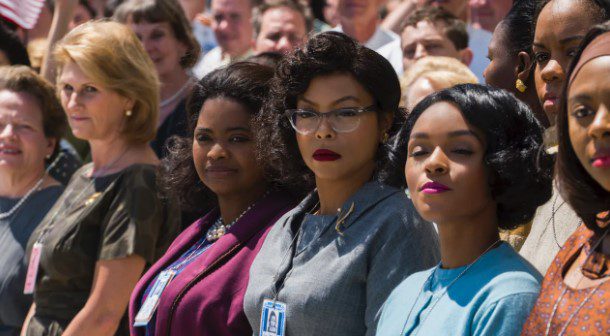Top 10 things you didn’t know about NASA

Introduction: NASA, the National Aeronautics and Space Administration, is renowned for its significant contributions to space exploration and scientific research. However, there are lesser-known facts about this pioneering agency that have shaped its history and achievements. In this list, we will uncover the top 10 things you didn’t know about NASA, shedding light on intriguing aspects that have played a role in its success.
1. Early Beginnings

Before NASA’s establishment in 1958, it was called the National Advisory Committee for Aeronautics (NACA). NACA’s research laid the groundwork for NASA’s space exploration efforts. The transition to NASA marked a shift from focusing solely on aeronautics to encompassing space missions and space-related research.
2. Human Computers

In the early days of space missions, NASA employed “human computers,” predominantly African-American women, who performed complex mathematical calculations critical to the success of spaceflight. These skilled mathematicians played vital roles in the Mercury, Gemini, and Apollo missions, overcoming gender and racial barriers to contribute significantly to NASA’s achievements.
3. The Golden Record

Launched in 1977, Voyager 1 and 2 spacecraft carry a Golden Record, a time capsule of sorts, containing sounds and images from Earth. The intention behind the Golden Record was to showcase humanity’s diversity and culture to potential extraterrestrial civilizations the spacecraft might encounter during their journeys through interstellar space.
4. Hubble’s Mirror Flaw

When the Hubble Space Telescope was launched in 1990, it had a serious optical flaw that initially hindered its performance. The telescope’s primary mirror had a slight aberration, causing images to be out of focus. However, a corrective mission in 1993 successfully fixed the issue, and Hubble continues to provide breathtaking images of distant celestial objects.
5. Space Pen vs. Pencil Myth

Contrary to popular belief, NASA did not spend millions on inventing a space pen. Initially, both NASA and the Soviet Union used pencils for writing in space. However, due to concerns about the pencil’s potential for breaking and creating floating debris, both parties later switched to space pens that could write in microgravity conditions.
6. Space Gardening

Aboard the International Space Station (ISS), astronauts engage in space gardening, cultivating vegetables like lettuce and radishes in a microgravity environment. These experiments in space farming help NASA study how plants grow and adapt to space conditions, with the ultimate goal of developing sustainable food production systems for long-duration space missions, like those to Mars.
7. Hidden Figures

The movie “Hidden Figures” highlighted the contributions of African-American female mathematicians, including Katherine Johnson, Mary Jackson, and Dorothy Vaughan, to the early days of NASA. These brilliant women performed crucial calculations that were instrumental in launching the first Americans into space, yet their contributions were often overlooked until the movie brought their stories to the forefront.
8. The Space Emblems

NASA astronauts have individual mission emblems that are creatively designed and loaded with symbolism to represent their respective missions’ goals. These emblems, or “space patches,” often feature elements like spacecraft, celestial objects, flags, and mission names. They serve as unique identifiers for each mission and are displayed on spacesuits, spacecraft, and other equipment.
9. Moon Landing Tapes

The original tapes of the Apollo 11 moon landing, which captured the historic moment when Neil Armstrong set foot on the lunar surface, were accidentally erased and reused by NASA. Fortunately, copies of the footage exist, allowing the iconic event to be preserved in history and shared with future generations.
10. Space Treadmill Patent

The technology used in the “treadmill with vibration isolation and stabilization” for astronauts exercising in space was later adapted for use in treadmills on Earth. This space treadmill helps astronauts maintain their physical health during extended stays in microgravity and has also influenced the design of exercise equipment for use on the ground.
NASA’s journey in space exploration and scientific research is filled with fascinating stories and groundbreaking achievements. From its humble beginnings as NACA to its iconic moon landing and the human computers who played essential roles, NASA’s legacy is a testament to human ingenuity and determination.
As NASA continues to push the boundaries of space exploration and scientific discovery, we are reminded of the countless dedicated individuals who have contributed to its success. By unearthing these lesser-known facts, we gain a deeper appreciation for NASA’s role in shaping our understanding of the universe and inspiring generations to reach for the stars. The agency’s ongoing pursuit of knowledge and exploration stands as a beacon of human progress, guiding us toward a future of continued exploration and discovery in the cosmos.
“We’ve reached the end of our Top 10 countdown, and we’d love to hear from you! Do you agree with our choices, or is there something we missed that you feel deserves a spot on this list? Let’s start a conversation – comment below with your thoughts and ideas. Your input might just influence our next Top 10!”
If you like this you might like The Top 10 Most Groundbreaking Space Discoveries of All Time





